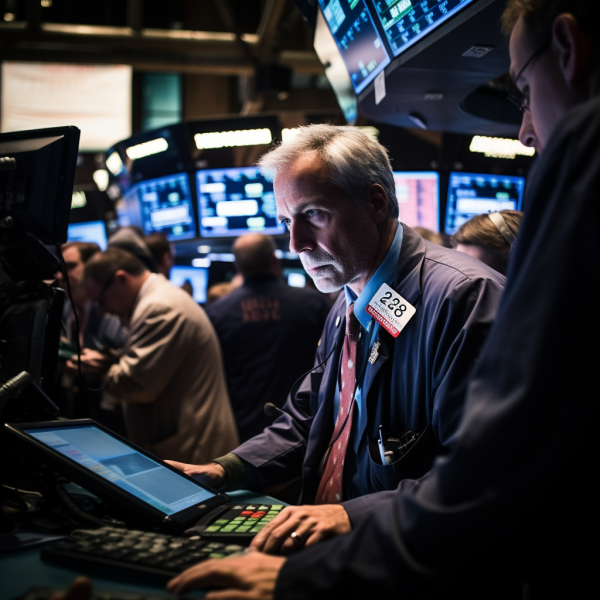Stock-market investors rarely see a recession coming despite warning signals. As all the classic alarm bells ring again, this time is no different, experts say — setting investors up to get crushed.

- Investors are ignoring recession alarm bells, some experts say.
- The S&P 500 has rallied 17% year-to-date, but the Treasury yield curve and LEI point to a downturn.
- Stocks are typically reactionary when it comes to recessions.
Right up until the economy enters a recession, there are always those who argue that we will avoid a downturn.
In a recent client note, Piper Sandler’s Michael Kantrowitz highlighted newspaper articles from 2007, 2000, 1989, 1980, and 1973 that touted a soft landing outcome.
David Rosenberg, the founder of Rosenberg Research who predicted the 2008 downturn, detailed in recent weeks how he was mocked for his forecast in 2007 by colleagues, clients, and Federal Reserve members.
However, you don’t have to rely on anecdotes to see that stock-market investors in general aren’t very good at forecasting recessions. Prior to each downturn, the market ignores leading indicators and instead reacts to backward-looking data such as payrolls.
The chart below, which depicts S&P 500 price action and recessionary periods (shaded purple), shows that market sell-offs frequently do not begin until a recession is declared.When stocks begin to fall briefly prior to the start of a recession, the majority of the losses occur after the recession begins.
Consider the two largest market sell-offs in history: 1929 and 2008. Investors were complacent prior to both recessions.
Lacy Hunt, executive vice president of the Hoisington Investment Management Company, recently told Wealthion about the 1929 crash: “The recession of the Great Depression of 1929 began in September.” The stock market didn’t crash until October 1929.”
And here’s Rosenberg on the recession that began in December 2007 and lasted until 2008. “We were rallying until October 2007.” The market was ripping into October ’07, and we had the worst recession since the 1930s.”
Another chart from Kantrowitz shows how investors bid up stocks as the Fed raises interest rates into a recession. The left side depicts instances when stocks entered a bear market, while the right side depicts years when a soft landing was achieved.
Why can’t investors’ dreams come true?
So why can’t this be one of the times on the chart above’s right side?
The difference, according to Rosenberg, is that we currently have an inverted yield curve, which has preceded every downturn since the 1960s. (The curve inverted in 2019, which economists often attribute to a soft landing, but the recession that began a few months into 2020 as a result of COVID-19 casts doubt on that assessment.)
An inverted yield curve means that short-term Treasury rates rise faster than long-term Treasury rates. The 3-month and 10-year yields are a common pair of durations compared.
Because short-term Treasury rates closely track the fed funds rate, the yield curve inverts frequently during Fed hike cycles. At the same time, because hike cycles tend to slow the economy, investors seek safety in longer-term Treasurys such as the 10-year, driving down yields.
For several months now, the yield curve has been inverted. The chart below depicts the percentage of consecutive trading days on which the yield curve has been inverted. The shaded grey areas represent recessions.
According to Kantrowitz, this time is different because earnings expectations have not risen in tandem with stocks this year, implying that the current rally is entirely driven by multiple expansion. In other words, stocks are unconnected to reality.
Expected earnings growth year over year is shown below. When it falls below zero, as it is now, it usually means a recession is on the way.
Looking at manufacturing data is another way to see this. While financial conditions are improving, the number of global purchasing managers indexes in contraction is increasing.
Kantrowitz has a long list of criteria for a recession to occur, all of which have occurred in previous downturns. A Fed tightening cycle, an inflation spike, tightening lending standards, a housing market slowdown, a manufacturing slowdown, a slowing of profit growth, a rally on hopes of a soft landing, and rising unemployment claims are among them.
Except for the last one, all of the boxes have been checked in the current cycle. The Bureau of Labor Statistics announced on Friday that the US economy added 187,000 jobs in July, indicating that the labor force is still growing, albeit at a slower rate than economists expected.
Time will tell whether the labor market remains resilient, but other indicators point to the economy continuing to slow, just as they have in previous downturns.
“To say that we’re going to have a soft landing today is so premature,” Kantrowitz said.





